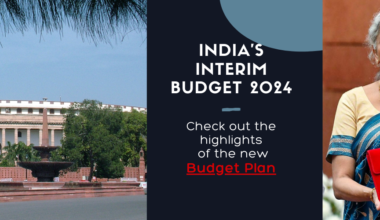Risk Management and Insurance play crucial roles in safeguarding our well-being and stability, shielding us from unexpected occurrences. Risk management involves the identification, evaluation, and prioritization of risks to diminish their consequences, while insurance offers monetary protection against potential liabilities. Together, these practices are integral to both our personal and business spheres, guaranteeing a secure and prosperous future.
By employing these strategies, we empower ourselves to make informed decisions, minimize financial losses, and safeguard our valuable assets and well-being.
The objective of risk management and insurance are twofold. Firstly, they involve identifying and evaluating risks, enabling proactive measures for prevention or mitigation. Secondly, they aim to reduce financial losses by transferring risk to insurance providers, thus lessening the impact on personal or organizational resources.
Types of Risks
There exists a wide range of risks that individuals and organizations encounter:
Pure Risk:
Pure risks are events that can only result in a loss or no loss. They include things like natural disasters, accidents, or theft. Pure risks are typically insurable because they involve uncertain outcomes with potential financial consequences.
Speculative Risk:
Speculative risks involve the possibility of gaining or losing. They usually come up when you invest money or start a new business. Speculative risks are often not covered by insurance.
Fundamental Risk:
Fundamental risks are inherent in the environment or industry in which an individual or organization operates. These risks can arise from factors such as changes in government regulations, economic fluctuation, or technological advancements.
Risk Management Strategies
To adequately mitigate risks, both individuals and organizations employ a range of strategies:
Risk Avoidance
This approach involves recognizing activities or situations that pose a high level of risk and completely refraining from engaging in them. By removing any exposure to these specific risks, the chances of experiencing adverse outcomes can be diminished.
Risk Reduction
Risk reduction involves minimizing the likelihood or impact of potential risks through safety protocols, quality control, employee training or preventive measures.
Risk Retention
This involves assuming a specific degree of risk and depending on internal resources to reduce potential losses. This approach is frequently employed for risks of limited severity.
Risk Transfer
This involves transferring the financial responsibility for potential losses to an insurance provider. Through the purchase of insurance policies, individuals and organizations shift the risk to the insurer, who will offer compensation if a covered loss occurs.
Insurance Basics
Insurance is vital for safeguarding individuals and organizations by providing financial stability, protecting assets, and ensuring continuity in the face of unexpected events.
There exists a wide range of insurance options, such as life insurance, health insurance, property insurance, liability insurance, and others. Each type serves the purpose of protecting against specific risks and offers financial benefits based on those risks.
Insurance policies typically include various elements, including premiums, deductibles, policy limits, and exclusions.
Key Elements of a Risk Management and Insurance Plan
The first step in creating a risk management and insurance plan is to assess the potential risks. This involves identifying and analysing various risks, evaluating them and their potential impact, and prioritizing them based on their significance.
Once risk has been identified, it’s important to implement safety measures, improve security protocols, conduct regular inspections, and train employees. This proactive risk management reduces the impact of possible losses.
After the damage has been inflicted, insurance comes into effect. So, it is important to select policies that correspond to identified risks, and seeking guidance from experienced insurance professionals can ensure appropriate coverage.
Also, regularly reviewing and updating risk management and insurance plans is important to keep them relevant. Changes in the environment, industry, or personal circumstances should be considered. Periodic risk assessments, insurance policy reviews, and adjustments to risk management strategies and coverage are necessary. This ensures that the plans remain effective and adequately protect against potential risks.
Benefits of Risk Management and Insurance
Amidst the swirling uncertainty of life’s unpredictable twists and turns, risk management and insurance emerge as guardians. It ensures that individuals or organizations do not bear the full burden of the associated costs. It helps in preserving financial stability and prevent significant setbacks.
When you have a strong plan to manage risks and insurance, it gives you peace of mind. You don’t have to worry as much about unexpected events and their consequences.
For business, risk management and insurance are important for ensuring continuity. Insurance coverage acts as a safety net, helping businesses recover quickly from significant losses and resume operations. It protects employees, assets, and customer relationships, minimizing the impact of disruption.
Conclusion
Risk management and insurance play an integral role in securing our future, making them indispensable tools. Through the effective identification, assessment, and mitigation of risks, both individuals and organizations can minimize potential losses and maintain financial stability. Insurance coverage acts as a safety net, offering essential financial protection against various risks.
To learn more about the art of risk management and insurance and how it can safeguard your future, explore the programs offered by leading BBA colleges in Ghaziabad, these institutions can provide valuable education and knowledge in the field of risk management and insurance, equipping students with the necessary skills to excel in the critical domain.
Amidst an ever-shifting world, it’s really important to manage risks and have insurance. By learning about the different types of risks, coming up with effective ways to manage them, getting the right insurance coverage, and regularly reviewing and updating your plan, you can protect yourself, your loved ones, and your things. Embrace the skill of risk management and insurance to make sure you have a brighter and stronger future.











